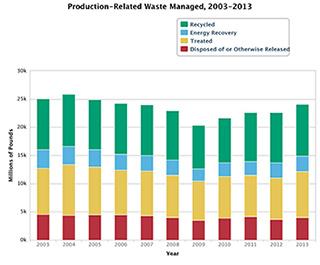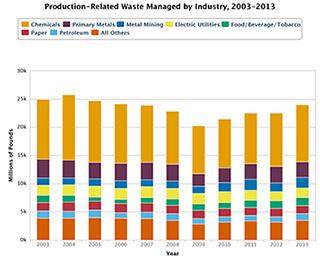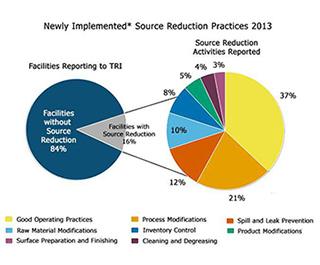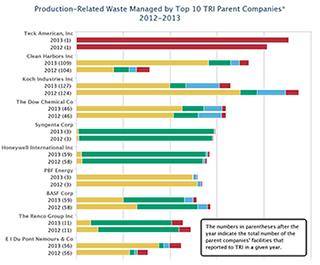2013 TRI National Analysis: Pollution Prevention & Waste Management
The Toxics Release Inventory (TRI) collects information from facilities on the quantities of toxic chemicals recycled, combusted for energy recovery, treated for destruction, and disposed of or otherwise released on- and off-site. This information is collectively referred to as production-related waste managed.
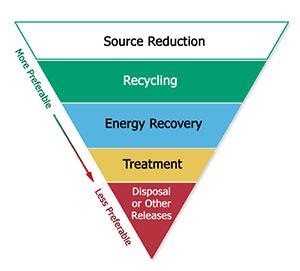
Looking at production-related waste managed over time helps track progress in reducing waste generated and in moving toward safer waste management methods. EPA encourages facilities to first eliminate waste at its source. For waste that is generated, the preferred management method is recycling, followed by burning for energy recovery, treating, and, as a last resort, disposing of or otherwise releasing the waste. These waste management priorities are illustrated in the waste management hierarchy established by the Pollution Prevention Act (PPA) of 1990. The goal is that, when possible, facilities will shift over time from disposal or other releases toward the preferred techniques in the waste management hierarchy.
| Sections in this chapter | |
|---|---|
| Waste Management Trends |
Waste Management by Industry Sector |
| Source Reduction/Pollution Prevention |
Waste Management by Parent Company |
This page was published in January 2015 and uses the 2013 TRI National Analysis dataset made public in TRI Explorer in October 2014.


